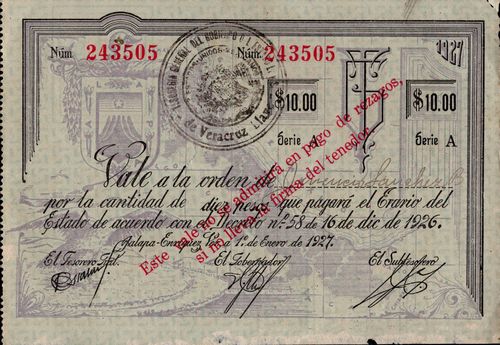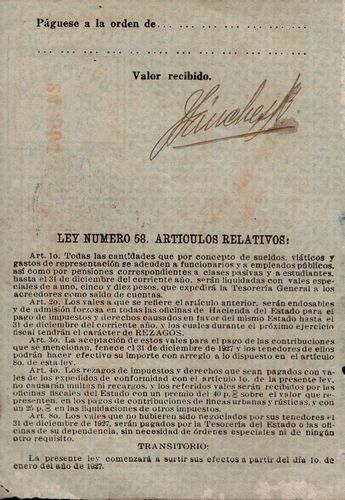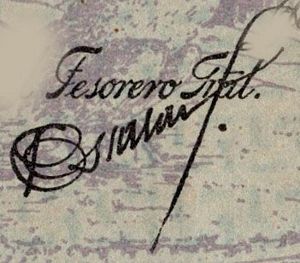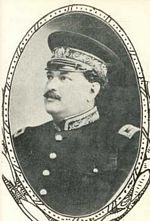Tesorería General del Gobierno’ use of vales in 1927
In 1926 Veracruz, like other states, had a problem with its finances and so, on 16 July 1926, decree núm. 58[text needed] resolved that the state should pay the salaries and other expenses of its employees as well as various pensions by means of an issue of vales in $1, $5 and $10 denominations. The vales were payable to a named person and would be accepted, once endorsed on the reverse, for the payment of any taxes or charges during the year 1927, so it was claimed that they were a form of delayed payment.


| from | to | total number |
total value |
||
| $1 | |||||
| $5 | |||||
| $10 | includes numbers 243505 to 253222CNBanxico #6400 |
The vales were dated 1 January 1927 and signed by the Tesorero General[identification needed], the Gobernador and the Subtesorero[identification needed].
|
A couple of years later, he was a co-founder of the Partido Antirreeleccionista Veracruzano and took up arms against Porfirio Díaz in May 1911. Once Madero assumed the presidency, Jara Corona was elected as an independent deputy to the XXVI Legislature where he presented initiatives aimed at improving the conditions of workers such as the the abolition of the tiendas de raya and the payment of wages in cash. After the decena trágica he escaped to Xalapa to organize the fight against Huerta, had to flee to Cuba, but then re-entered the country at Coahuila and ultimately joined Carranza’s forces. In 1914, he returned to his home state and occupied with his troops the port of Veracruz at the departure of the Americans. He held several public positions in the state and was a deputy in the Constituent Congress from 1916 to 1917 where he specifically promoted the idea in the articles referring to education, national sovereignty and workers' rights. He served as ambassador to Cuba and as governor of Tabasco and then, in 1924 was elected governor of Veracruz, serving from 1 December 1924 to October 1927, but did not finish his term due to conflicts with the Veracruz cacique Adalberto Tejeda Olivares and President Plutarco Elías Calles. He remained away from politics until 1935 when President Lázaro Cárdenas, in the process of getting rid of Calles' influence, appointed him to the key position of Inspector General of the Army. In 1939 he became president of the Partido de la Revolución Mexicana, from where he coordinated the electoral campaign of Manuel Ávila Camacho. When the latter took office, he appointed him as the first Secretary of the Navy. He died on 17 April 1968. |
 |
 |
|
 |

